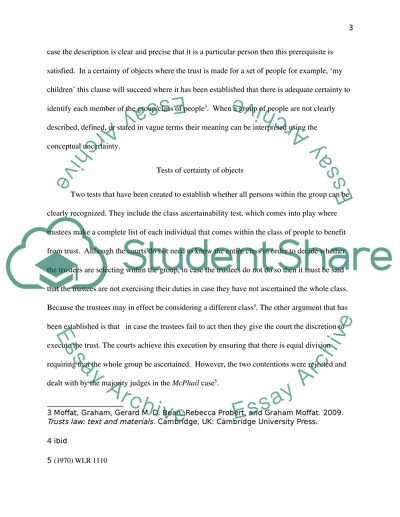Cite this document
(“Critically evaluate the tests for certainty of objects in the law of Essay”, n.d.)
Critically evaluate the tests for certainty of objects in the law of Essay. Retrieved from https://studentshare.org/law/1665061-critically-evaluate-the-tests-for-certainty-of-objects-in-the-law-of-trusts-and-assess-whether-developments-in-the-last-half-century-have-had-a-positive-or-negative-impact-on-the-law
Critically evaluate the tests for certainty of objects in the law of Essay. Retrieved from https://studentshare.org/law/1665061-critically-evaluate-the-tests-for-certainty-of-objects-in-the-law-of-trusts-and-assess-whether-developments-in-the-last-half-century-have-had-a-positive-or-negative-impact-on-the-law
(Critically Evaluate the Tests for Certainty of Objects in the Law of Essay)
Critically Evaluate the Tests for Certainty of Objects in the Law of Essay. https://studentshare.org/law/1665061-critically-evaluate-the-tests-for-certainty-of-objects-in-the-law-of-trusts-and-assess-whether-developments-in-the-last-half-century-have-had-a-positive-or-negative-impact-on-the-law.
Critically Evaluate the Tests for Certainty of Objects in the Law of Essay. https://studentshare.org/law/1665061-critically-evaluate-the-tests-for-certainty-of-objects-in-the-law-of-trusts-and-assess-whether-developments-in-the-last-half-century-have-had-a-positive-or-negative-impact-on-the-law.
“Critically Evaluate the Tests for Certainty of Objects in the Law of Essay”, n.d. https://studentshare.org/law/1665061-critically-evaluate-the-tests-for-certainty-of-objects-in-the-law-of-trusts-and-assess-whether-developments-in-the-last-half-century-have-had-a-positive-or-negative-impact-on-the-law.


